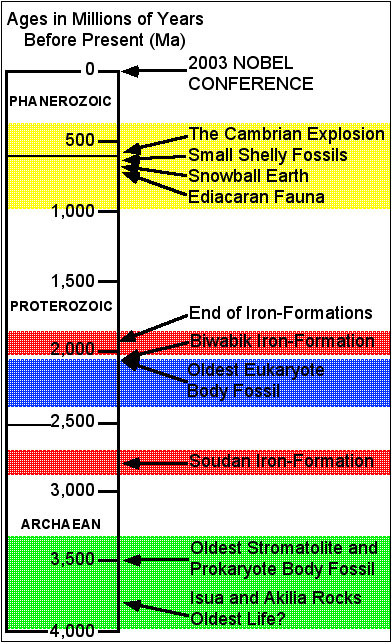No geological time boundary has the significance and philosophical baggage of the pre-Cambrian/Cambrian boundary. By definition, this defining time line separates the vast expanse of ‘hidden life’ (Proterozoic) below from the ‘visible life’ (Phanerozoic) above. Originally, the lower boundary was placed at the appearance of the first trilobite. However, during the latter twentieth century, as geologists probed the layers below the boundary, it became apparent that there is a rich record of life, including the Ediacaran Fauna and small shelly fossils. In addition, the pre-trilobite strata also preserve a variety of trace fossils, or track, trails, and burrows that show increasing complexity as one travels upward through time.
By convention, the international community adopted the trace fossil Treptichnus (Phycodes) pedum as the indicator fossil for the base of the Cambrian. Find this fossil and you can put your finger on the boundary. T. pedum looks like a twisted rope that curls along bedding planes. The sample in this display was collected near the Nevada-California border in an area of extensive Neoproterozoic and Cambrian outcrop.
Quick Links to: Introduction Oldest Rocks on Earth Oldest Fossils Prokaryotes vs. Eukaryotes Oldest Eukaryotes Oxygenation of the Atmosphere Ediacaran Fauna Snowball Earth Oldest Skeletons Pre-Cambrian/Cambrian Boundary Links for more information
